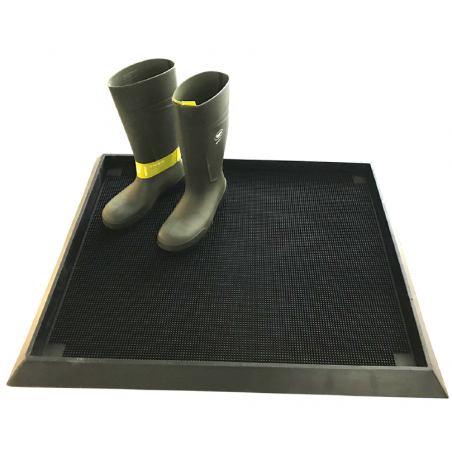Since the 2013 introduction of porcine epidemic diarrhea virus in the United States, feed and feed ingredients have been recognized as potential routes for transboundary spread of swine diseases. To determine virus survival during transoceanic shipping, we calculated the half-life of the virus in 9 feed ingredients exposed to 30-day shipment conditions. Half-lives ranged from 9.6 to 14.2 days, indicating that the feed matrix environment promotes virus stability. An environmental chamber simulated a 30-day simulated trans-Atlantic shipment, with the environmental conditions of humidity and temperature fluctuating every 6 hours. We added 5 g of each gamma-irradiated feed ingredient to 50-mL conical tubes before inoculating them with 100 µL of 105 50% tissue culture infective dose (TCID50) of ASFV Georgia 2007/1. Negative controls consisted of complete feed samples in meal form with 100 µL of sterile phosphate-buffered saline (PBS) added. Positive controls consisted of 5 mL of RPMI 1640 medium lacking feed with 100 µL of 105 TCID50 ASFV. We organized samples in duplicate into 4 replicate batches representing 4 time points and simulated the trans-Atlantic shipping model over 2 separate 30-day periods. We tested samples for ASFV on days 1, 8, 17, and 30 after contamination. The first sample was collected at 1 day after contamination to allow the virus to stabilize within each matrix. ASFV was quantified by virus titration.
All ASFV-inoculated samples showed detectable quantities of infectious ASFV. The half-life estimate in the RPMI-positive control was shorter than that for all feed ingredients tested: 8.3 + 0.3 days (95% CI 7.7–9.0 days). The virus half-life was longest in complete feed: 14.2 + 0.8 days (95% CI 12.4–15.9 days). Of note, for conventional versus organic soybean meal, the half-life of ASFV differed by >3 days: 9.6 + 0.4 days (conventional soybean meal) and 12.9 + 0.6 days (organic soybean meal). The relative stability in feed may be the result of variable protein, fat, or moisture content among ingredients. Overall, the mean half-life for ASFV in all animal feed ingredients was 12.2 days.

Stoian, A., Zimmerman, J., Ji, J., Hefley, T. J., Dee, S., Diel, D. G....Niederwerder, M. C. (2019). Half-Life of African Swine Fever Virus in Shipped Feed. Emerging Infectious Diseases, 25(12), 2261-2263. https://dx.doi.org/10.3201/eid2512.191002.




